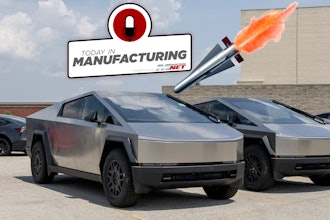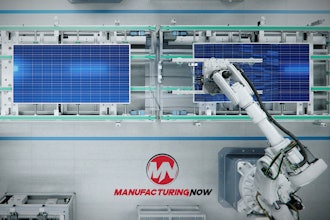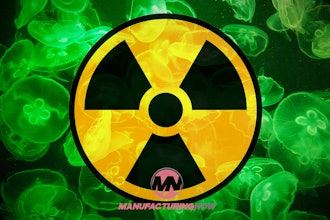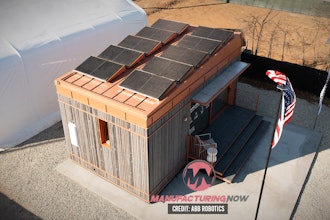Engineers at the University of Glasgow have designed, developed and fired Ouroborous-3, the first unsupported "autophage" rocket engine that eats parts of its own body for fuel.
The concept seems futuristic, but the idea is actually nearly 100 years old. The hope is the rocket engine can fly far beyond the Earth's atmosphere and make the United Kingdom a larger player in the space industry.
The engine uses waste heat from combustion to melt its own plastic fuselage as it fires. The molten plastic is fed into the engine's combustion chamber as additional fuel that burns alongside onboard liquid propellants. Listen to this thing and watch it eat.
Most Ready on IEN:
- U.S. Lunar Lander Loses Hope
- Honda Debuts Two New EV Concepts
- Boeing Starts Chopping Up Old MD-90
- Siemens, AWS Join Forces to Democratize Generative AI
The engineers from Glasgow, who are working with counterparts at Kingston University, have demonstrated that the plastic fuselage can withstand the forces required to feed it into the engine without buckling. It’s a key step in making the concept viable. With this technology, spacecraft would need less propellant in onboard tanks, which means the craft can be lighter, or have additional payload onboard.
Consuming the fuselage also helps stem the growing space junk problem littering our orbit and threatening future launches.
Autophage comes from the Latin word for "self-eating." The concept was first proposed and patented in 1938, but engine designs using the tech were only fired in a controlled manner until a team from Glasgow and Dnipro National University in Ukraine did it in 2018.
In a recent test, the Ouroborous-3 engine produced 100 newtons of thrust. The tests not only show the engine is capable of stable burn throughout the autophage stage, but also that the rocket’s burn could be successfully controlled. The team was able to throttle, restart and pulse the engine in an on/off pattern. The high-density polyethylene plastic tubing supplies up to one-fifth of the total propellant used.
Now the team is looking to scale up these propulsion systems to support the additional thrust required to make the design function as a rocket. The team is focused on refining the design towards an eventual test flight, but they’re unable to put a specific timeframe on a potential launch. The team also declined to comment on potential commercialization efforts.






















